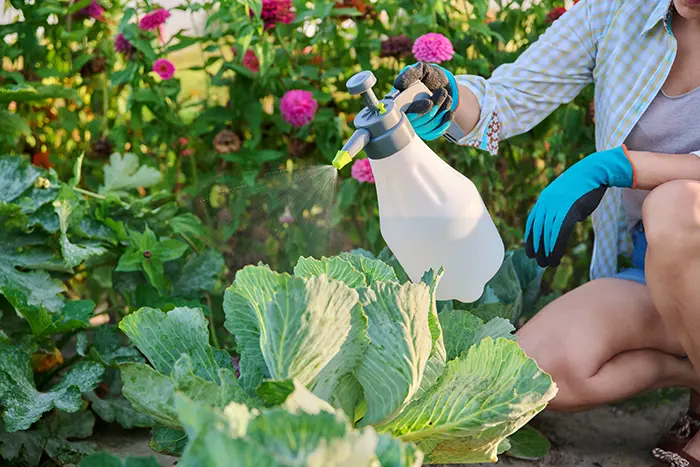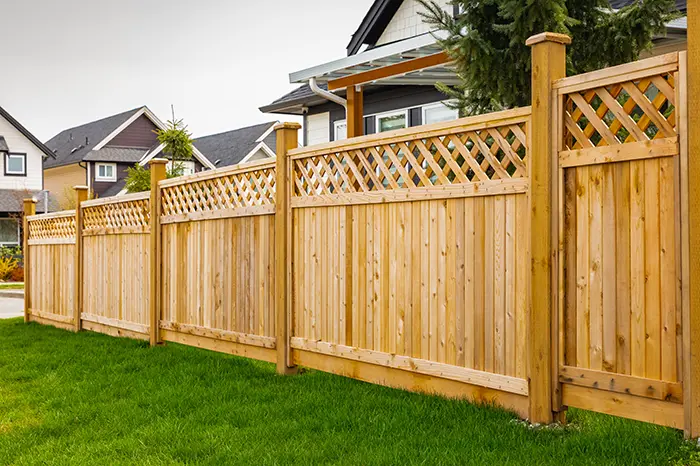Southern California has diverse plant life, but homeowners can’t just use any type of plant or shrub in their backyards. HOA garden rules exist to preserve the community’s aesthetic appeal while ensuring both residents and protected plant species are safe.
Why HOA Garden Rules Matter
You may be tempted to plant a type of plant in your garden, just based on how it looks. However, there needs to be a balance among that creative freedom, community aesthetics, safety, and plant preservation.
Given these, HOA garden rules exist to help with the following:
- Prevent unregulated plant growth that could damage fences, neighbor views, or structures
- Limit water usage in drought-prone Southern California
- Define acceptable plants, containers, and design elements
- Provide clarity for homeowners and board members, reducing disputes
When you understand HOA garden rules, it will be easier to create a beautiful and compliant green space in your property without surprises or penalty letters.
Permit Requirements and Exterior Approval
Figuring out what plants you can use in your garden doesn’t have to be hard. Many HOAs require approval before any landscaping or gardening project begins. This is done mainly to enforce consistency and safety.
Here are some of the requirements you need to keep in mind:
- Architectural or landscape requests: Most communities mandate a simple application before planting; major changes (e.g., trees, edging, irrigation) often need full ARC approval.
- Timing and fees: Submit your plans early since approval can take weeks. Expect nominal filing fees or refundable deposits.
- What to include: Provide a site plan, plant list, container details, and irrigation method. Label locations for potted plants, raised beds, or garden ornamentation.
- Digital options: Many modern HOAs use online portals for landscape requests. This makes it easier for residents to submit their requests. It makes compliance simpler and more transparent.
Approved Plants and Prohibited Species
What can homeowners plant in their gardens? It doesn’t have to be a guessing game. HOA community garden rules typically include detailed plant lists and guidelines.
Approved Plants
Many plants allowed in HOA gardens usually have one or multiple of the following characteristics:
- Low-water, native species: In California, it is usually encouraged to use drought-tolerant, native selections, such as lavender, rosemary, California fuchsia, salvia, and manzanita, which are frequently encouraged.
- Restricted-height shrubs and hedges: Garden regulations usually include defined height limits (e.g., 4–6 feet). Having this limit helps preserve neighbor sightlines.
- Decorative flowering plants: Seasonal ornamentals (e.g., zinnias, petunias, geraniums) may be allowed with container or bed placement restrictions.
- Edibles (where permitted): Many HOAs nowadays allow vegetable or herb gardens, provided they adhere to design rules and siting limitations.
Prohibited Species
These restrictions prevent plants that can threaten safety, property, or aesthetics:
- Invasive species: Plants like bamboo, pampas grass, ficus, and oleander are usually banned for garden use as they can grow or spread aggressively or have root-invasive properties.
- Toxic or allergenic plants: High-pollen-producing plants and trees are usually banned from communities to avoid health risks for residents.
- Overgrown trees or vines: Many species are banned since they may encroach on roofs, structures, or pathways.
HOA policy guides may include a color-coded “allowed vs. restricted” plant list, and you should always review these to stay compliant.
Container Gardening and Vertical Gardens
Homeowners with patios, balconies, or limited yard space often turn to container gardening. However, even potted plants must follow HOA garden restrictions.
Size and Material Limits
Many associations regulate the dimensions and materials of plant pots and containers. It’s one way of preserving your community’s uniform aesthetic.
Some associations limit the use of oversized pots because they may be seen as disruptive. They may also restrict certain materials, such as rust-prone metal or plastic, in garden settings.
Often, HOAs would allow neutral-toned ceramics or pots made of a composite that easily match the overall aesthetic of the neighborhood.
Placement
Even when using containers, location matters. Pots should only be placed in private areas such as balconies, porches, or rear patios. Usually, rules don’t allow such containers to be placed in front yards, driveways, or shared pathways. However, it is possible to have those placements approved in advance.
Drainage and Protection
To protect common property from water damage, many HOAs require that containers have proper drainage systems, including saucers or drip trays. Without these, overwatering could lead to stained concrete or slippery surfaces, prompting homeowners to be responsible for any cleanup or repair costs.
Vertical gardens—such as wall-mounted planters or trellis systems—are often subject to additional scrutiny. These structures must be securely mounted, not exceed height limits, and use non-invasive plants that won’t damage walls or fences.
Vegetable and Herb Gardens in HOAs

Many communities now encourage food gardening, but HOA garden regulations outline how and where residents can grow edibles to avoid disruptions.
Raised beds and ground beds allowed? While some HOAs ban traditional in-ground plots, many now permit raised beds in backyards or side yards as long as they meet size, height, and border guidelines. For instance, a common restriction is that raised beds remain under 2 feet tall and do not cover more than a certain percentage of the yard.
Plant types. Leafy greens, tomatoes, peppers, and herbs like mint or cilantro are typically acceptable. However, plants that attract pests, produce strong odours, or grow uncontrollably—such as corn or artichokes—may be restricted. Fruit trees may be allowed with setback requirements to avoid overhang into neighbouring yards.
Quality requirements. HOAs usually emphasise garden upkeep. That means regularly watering, pruning, and removing dead leaves or plants. Overgrown or neglected gardens can result in warning letters or even fines, especially if the garden becomes an eyesore or nuisance.
These edible gardens offer homeowners a rewarding way to engage with their outdoor space—as long as they stay within the bounds of community policy.
Irrigation, Pest Control, and Maintenance
Behind every lush garden is a system of care. That system also falls under HOA oversight to prevent resource misuse and preserve shared peace.
Water-wise Irrigation Systems
Southern California’s water scarcity has prompted HOAs to encourage or require drip irrigation systems. These use less water and deliver it directly to the roots, making them more efficient than sprinklers. Modern HOA garden regulations increasingly mandate systems with automatic shut-offs during rain or wind.
Timers and Smart technology
Some associations require that irrigation systems be fitted with programmable timers to reduce waste. In areas with strict local water restrictions, boards may also recommend or enforce watering schedules (e.g., no watering between 10 a.m. and 6 p.m.).
Organic Pest Management
Homeowners are often encouraged to avoid chemical sprays in favour of eco-friendly solutions such as neem oil, companion planting, or beneficial insects like ladybugs. This aligns with IPM (Integrated Pest Management) practices promoted by local environmental agencies.
Chemical Restrictions
If pesticides or weed killers must be used, many HOAs require advance approval or mandate that only licensed professionals apply them. This ensures safety for neighbouring residents and pets and limits liability.
Regular Upkeep
Gardens must remain tidy and pruned, with no dead foliage, leaning plants, or obstructed walkways. Failure to maintain appearances can trigger HOA enforcement, particularly when shared areas are affected.
Design Aesthetics and Color Cohesion
While gardening allows for some creativity, homeowners must follow design standards that preserve neighbourhood appeal.
Approved Color Palettes
Many HOAs regulate flower colours and container tones to match the community’s architectural theme. Neutral shades like white, beige, or soft pastels are typically preferred over bright, neon colours. Even seasonal blooms may need to blend harmoniously with the surroundings.
Edging and Hardscape Rules
Decorative elements such as mulch, gravel, or border stones must comply with material and colour guidelines. Crushed glass mulch or brightly painted bricks may be disallowed, while earth-toned stone or bark mulch is often encouraged.
Garden Art and Ornaments
While homeowners may wish to display statues, flags, or solar lighting, HOAs often limit both size and number. For example, no more than two decorative items may be allowed per garden bed, and they must not exceed 24 inches in height. Flashing lights or political signs are generally banned.
These aesthetic standards help maintain a cohesive look while allowing for individual expression within boundaries.
Fences, Screens, and Privacy Plantings

Landscaping often serves dual purposes: enhancing beauty and providing privacy. But even with this in mind, HOA garden restrictions apply.
Screening Vegetation
To create privacy without creating eyesores, HOAs typically permit shrubs or hedges like boxwood or pittosporum up to a certain height, often no more than 6 or 8 feet. These must be regularly trimmed and should not block sidewalks, driveways, or the view from neighbouring homes.
Solid Fences vs. Hedges
Some HOAs prefer or require solid structures (like wooden fences) over dense plantings to delineate boundaries. Where privacy hedges are permitted, spacing and distance from lot lines may be specified in the CC&Rs.
Maintenance Responsibility
Regardless of who planted it, the homeowner is responsible for ensuring that trees, shrubs, and vines do not encroach on neighbouring properties or common areas. Roots that damage driveways or fences could result in liability or HOA repair fees.
Keeping Up with HOA Garden Rules
HOA garden rules keep landscapes beautiful, safe, and friendly across Southern California communities, while still allowing thoughtful personalization through approved plants, containers, vegetables, and design.
Need professional management services for your HOA community? Personalized Property Management offers HOA management services around Southern California. Call us at 760-325-9500 or email us at info@ppminternet.com for more information!
RELATED ARTICLES
